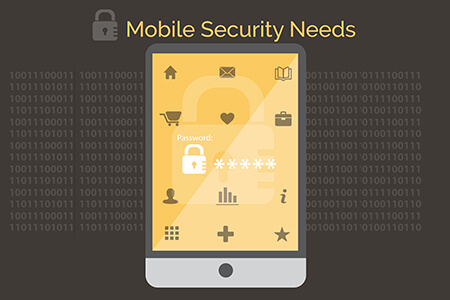
-
Common security mistakes committed by mobile app developers and fixes
Mobile app security issues are of great importance for both developers and customers. Smartphones and tablets not only enter into people’s everyday life, but also it alters the way businesses consolidate their workflow. Security is an important feature and it should not be taken for granted while developing mobile applications. In this blogpost, we will explain you some of the common security errors done by mobile app developers and the ways to elude them.
Underestimation of mobile security needs:
Software developers build an application with a set of advanced features and rich user interface, and in the meantime forget about security vulnerabilities. In most cases, developers are not security experts and many functionalities like near field communication (NFC) and QR code readers, demand a better security level than a mobile app normally provides.
How to fix this issue ?
It is important for a developer to think about security beginning with the very early stages of the app development.

Weak Encryption:
-
-
Mobile applications allowing transmission of unencrypted or weakly encrypted data, which is more susceptible to attacks.
-
-
It is more important to use appropriate encryption methods to safeguard the sensitive data during its transfer from the app to the server and back.
-
-
Developers often miss to use proper encryption controls that protects the data. Due to this, the user’s face a type of hacking risk called “man-in-the-middle” attack.
-
-
Moreover, many app developers forget to turn on a pop-up alert that will warn an app user if they’re at the risk of eavesdropping.
Server Side Vulnerabilities:
-
-
If the web server is inappropriately configured, third party users can easily gain unauthorized access to sensitive resources.
-
-
In order to work properly, Mobile apps have to communicate with a server, but the problem is this can open up the server to data breaches.
-
-
A typical mobile app needs the server only for a few functions. But, developers often mistakenly allow the servers to use/access lot of unnecessary data and processes from outside networks. This puts the server at risk.
How to fix this issue ?
To avoid this, the developer should be able to recognize exactly what is exposed by the server. All of these insecure data should be secured properly to prevent data breaches..
Hacker Attacks:
-
-
Without proper security, apps can be highly susceptible to hacking.
-
-
Two of the most popular types of hacks are called cross-site scripting (XSS) and SQL injection ( SQLi).
-
-
While these attacks are highly technical, the one thing you need to know is that both the hacks will essentially steal information i.e. XSS steals it from the user (passwords, logins, cookies, etc.) and SQLi steals information from the corporate databases (it can also delete sensitive information).
How to fix this issue ?
You need to make sure that the developer team is having the app tested against both types of hacks. There are a number of automated services out there that will do this for you. Also ask your developer if he/she is testing the app for all sort of vulnerabilities.
Risks with Advanced Features:
-
-
Developers are adding a lot of advanced functionalities into today’s mobile apps – like near field communication (NFC) and QR code readers. However, in many cases, developers fail to realize that these special features require a higher level of security.
-
-
Without the proper security precautions, they can expose the app to a whole new set of potential attacks.
How to fix this issue ?
You need to have a qualified security device that test the app’s advanced features against different types of hack attacks. This is the only way to ensure these features won’t undermine your security.
Unauthorized access:
-
-
Unauthorized access into a mobile application allows users to see the accounts of other users or even access deeper components of the system including administrative controls.
-
-
Unauthorized requests should be verified by the server and internal alerts should be triggered if there are a lot of such requests.
How to fix this issue ?
Software developers have to understand the specific device’s features from the data security point of view to be able to decide what components should or should not be included into the application, especially when these components are of third party origin.
Storing crucial data in the device memory:
One of the most common mistakes which mobile developers make while creating mobile applications is allowing the app to store confidential data on a device such as authentication information, PINs, details of the account which are often unencrypted. Meanwhile, if the smart phone or tablet is lost, stolen or compromised, sensitive information may be misused, which potentially leads to significant financial losses.

Conclusion:
Your phone’s security doesn’t only depend on effective and up-to-date data protection technologies, but, there are things, like the one’s mentioned above, which are essentially under a developer’s control. During every stage of the development process, keep app security in mind, such as app conceptualizing, defining system architecture, design, and writing the code, which helps to avoid dealing with major security faults in the future. We hope this blog post helps you in identifying some common security mistakes made by mobile app developers and assists you in fixing some of those problems. Stay alert and keep your sensitive data safe !
Posted by admin Posted on 2015-03-10 -
Drop us a line
Please correct the following errors and try again:

Post Comments 1